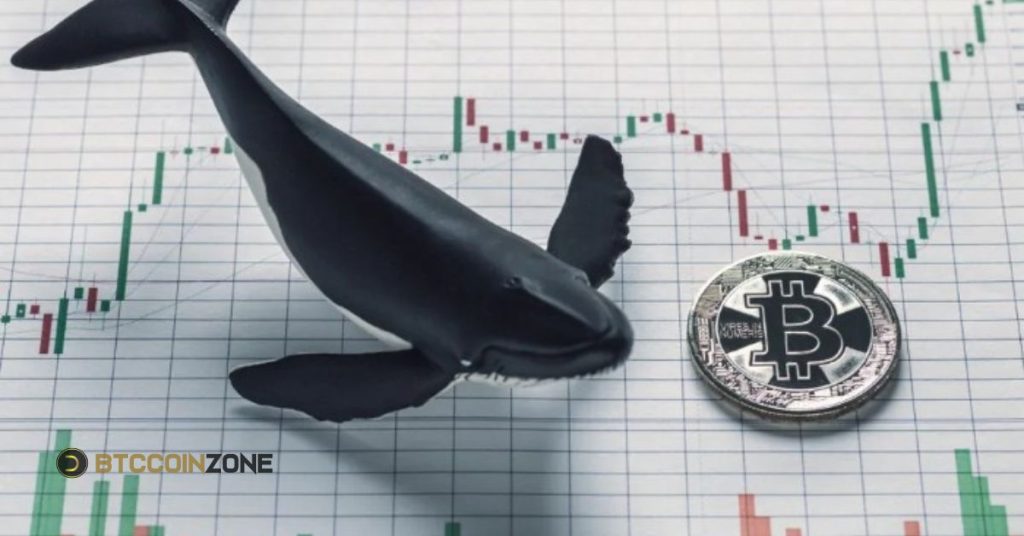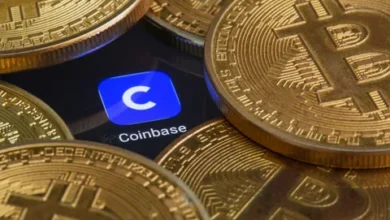What Are Bitcoin Whales? A Guide by Btccoinzone

Bitcoin Whales: Since its launch in 2009, Bitcoin’s popularity has skyrocketed, and a new breed of cryptocurrency market participants has emerged to capitalize on this trend. Bitcoin whales are among these participants and they have a major impact on the market. This tutorial will explain Bitcoin whales, their effects on the market, and what regular traders and investors can learn from them.
What’s A Bitcoin Whale?
Bitcoin whales hold 1,000 BTC or more, which gives them influence over the cryptocurrency market. Whales buying or selling large amounts of Bitcoin might cause price volatility owing to rapid supply or demand changes. This market influence can cause price volatility as whale activity swiftly rises or falls.
Bitcoin whales might be early adopters, institutional investors, exchanges, or affluent individuals with enormous Bitcoin holdings. Traders and investors watch these whales because their buying and selling can predict market patterns. A whale buying Bitcoin may signal confidence in price gains, encouraging others to invest. Conversely, a whale selling significant sums of Bitcoin might cause panic selling among smaller investors, causing a market drop. Bitcoin whales can cause market instability, but understanding their behaviour is essential for cryptocurrency trading.
Characteristics of Bitcoin Whales
- Large Holdings: As mentioned, Bitcoin whales possess large quantities of Bitcoin, often enough to impact market prices when they buy or sell.
- Market Influence: Whales can influence market movements due to their substantial holdings. A significant sale or purchase by a whale can lead to price fluctuations that affect all market traders.
- Anonymity: Bitcoin transactions are pseudonymous, meaning the wallet holder’s identity is not directly linked to their real identity. This anonymity allows whales to operate without public scrutiny but also leads to speculation and concern about market manipulation.
How Do Bitcoin Whales Impact the Market?
Due to their massive holdings, bitcoin whales affect the market. Bitcoin prices can fluctuate when whales acquire or sell big amounts. A whale selling a lot of Bitcoin might flood the market with supply, causing other investors to worry and drive prices down. Many call this a “whale dump.”In contrast, a whale buying enormous sums of Bitcoin can boost demand and prices. Other investors may buy as the price rises, creating a “whale pump.” Short-term traders and long-term investors in the cryptocurrency market must observe Bitcoin whales since they can impact market patterns.

Price Volatility
Bitcoin prices are volatile due to market sentiment, regulatory developments, and macroeconomic trends. Large whale trades, rapid demand swings, and major news events can cause Bitcoin’s price to fluctuate quickly. Major economies’ regulatory announcements can prompt panic selling or purchasing, causing fast market swings. Traders can profit or lose a lot depending on trade timing due to this volatility. Bitcoin traders must comprehend and manage this volatility.
Market Manipulation
Due to the absence of regulation and decentralization of the cryptocurrency market, notably Bitcoin, market manipulation is a major worry. Large participants, known as “whales,” can make enormous trades that raise or deflate prices, offering profit opportunities. In “pump and dump,” huge amounts of Bitcoin are bought to raise the price and then sold at the top, leaving smaller investors with losses. Market manipulation can harm traders, so they must understand these strategies.
Liquidity Changes
Bitcoin liquidity affects price stability and trading opportunities. Bitcoin whales can raise or decrease market liquidity by buying or selling big amounts. Since there are enough buy and sell orders to match large deals, high liquidity smoothes price swings. In a low-liquidity market, a whale’s large transaction can generate dramatic price changes. Slippage, where an order is executed at a different price than intended, can affect traders’ strategy and earnings.
Sentiment Shifts
Whales—large Bitcoin holders—drive market sentiment. When whales purchase or sell large sums of Bitcoin, it can ripple through the market. A huge sell-off may frighten smaller investors, causing a market slump. Conversely, large purchases can enhance confidence, driving up prices as investors fear missing out on rewards. Market dynamics and short- and long-term trends can alter quickly due to sentiment fluctuations.
Who Are the Notable Bitcoin Whales?
People and organizations with large Bitcoin holdings, known as “whales,” have a major influence on the market. Some claim that the anonymous Bitcoin founder, Satoshi Nakamoto, who goes by the alias “Nakamoto,” has held on to about 1 million Bitcoins (BTC) ever since the token was created.
Among other notable whales, you can find early Bitcoin adopters such as the Winklevoss twins, who are said to possess over 200,000 BTC and the notoriously aggressive Bitcoin investor Tim Draper. Institutional investors like MicroStrategy and Tesla are also now prominent whales in the market. CEO Michael Saylor of MicroStrategy has amassed more than 100,000 BTC, while Elon Musk of Tesla contributed 42,000 BTC to the company’s financial sheet. Binance and Coinbase are two examples of whales who keep huge quantities of Bitcoin for their customers. Since these firms’ trading actions can cause substantial price variations, they play an important role in market movements. Because these large investors can affect market mood and trading tactics for smaller investors, keeping tabs on what these “whales” do is crucial.
How Can Average Investors Handle Whale-Influenced Markets?
Several tactics can help average investors manage whale-influenced markets. First, a diversified portfolio reduces whale-driven market swings. Second, trustworthy news sources and analytics can reveal market patterns and whale movements that may affect prices. Risk management measures like stop-loss orders help prevent large losses. Finally, avoid emotional responses to whale-driven volatility by focusing on long-term investing goals rather than market swings. Average investors can handle whale-influenced market uncertainty by combining these tactics.

Stay Informed
Understanding the Bitcoin market, especially in whale-influenced conditions, requires staying educated. Investors should monitor credible news sources, cryptocurrency forums, and market analysis platforms to understand whale activity and market trends. Twitter and Reddit offer real-time updates and community viewpoints. Analytics systems that detect huge transactions and wallet transfers can help investors predict whale-induced market swings. By actively engaging with current information and research, investors can make better judgments and adapt to the volatile Bitcoin market.
Avoid Panic Selling
Avoid panic selling to maintain a solid investing plan throughout market changes, especially when Bitcoin whales impact it. Investors panic sell after quick price declines out of fear of more losses. Investors should use research and long-term plans rather than emotion. Assess market circumstances, price fluctuations, and if a dip is part of broader market trends or a momentary fluctuation. Staying calm and focused on well-informed judgments rather than market noise helps avoid bad financial mistakes and maintain investment value.
Diversify Your Portfolio
Diversifying your portfolio reduces risk and boosts returns, especially in the volatile cryptocurrency market. Investments across cryptocurrencies, equities, bonds, and commodities can mitigate the effects of market fluctuations, which mitigates Bitcoin and other cryptocurrency volatility. Diversification reduces risk and improves stability by allowing other investments to outperform. Regular portfolio reviews and adjustments are needed to maintain a broad mix that matches your financial goals and risk tolerance.
Use Technical Analysis
Technical analysis is essential for bitcoin trading. Technical analysis uses historical price data and trading volumes to discover patterns, trends, and price changes. Investors can use charts, indicators (such as Moving Averages and Relative Strength Index), and trend lines to determine entry and exit positions. This approach predicts price patterns and manages risk. Technical analysis of Bitcoin and other cryptocurrencies can reveal market emotion, support and resistance levels, and breakout points for strategic trading and investing decisions.
Long-Term Perspective
Long-term thinking on Bitcoin whale activities can help normal investors. Investors can weather whale trade-driven market fluctuations by focusing on long-term patterns. This strategy stresses Bitcoin’s foundations and the cryptocurrency market’s development potential. Set realistic investment goals and avoid chasing fast returns to stay disciplined. Previous data reveals that Bitcoin has grown significantly despite short-term price volatility. Those willing to retain their investments through market cycles may benefit from patience and a long-term approach.
Also Read: Crypto Exchange Features & Comprehensive Guide
Final Thought
The cryptocurrency market is heavily impacted by Bitcoin whales, who substantially impact price movements and market dynamics. Bitcoin traders and investors would do well to familiarize themselves with these factors to better navigate the market. Regular people can lessen their impact from these major market participants’ moves if they educate themselves and use good trading tactics.
FAQs
What is a Bitcoin whale?
A Bitcoin whale is an individual or entity that holds a large amount of Bitcoin, typically defined as 1,000 BTC or more.
How do Bitcoin whales affect the market?
Through their buying and selling activities, whales can influence market volatility, manipulate prices, change liquidity, and shift market sentiment.
Who are some well-known Bitcoin whales?
Notable Bitcoin whales include Satoshi Nakamoto, institutional investors like MicroStrategy and Tesla, and cryptocurrency exchanges.
How can average investors protect themselves from whale movements?
Investors can stay informed, avoid panic selling, diversify their portfolios, use technical analysis, and maintain a long-term investment perspective.
Are Bitcoin whales illegal or unethical?
While holding a large amount of Bitcoin is not illegal, some may view certain trading practices by whales, such as market manipulation, as unethical.




